- Good Sam Community
- Everything RV
- Technical Issues
- Re: My insulation theory, take a look.
- Subscribe to RSS Feed
- Mark Topic as New
- Mark Topic as Read
- Float this Topic for Current User
- Bookmark
- Subscribe
- Mute
- Printer Friendly Page
My insulation theory, take a look.
- Mark as New
- Bookmark
- Subscribe
- Mute
- Subscribe to RSS Feed
- Permalink
- Report Inappropriate Content
Apr-24-2016 05:10 PM
Please read this post completely before giving me your opinions, thanks!
I'm working on my very first DIY camper conversion, using a 2010 extended Ford E250.
At this moment the floor, upper wall and ceiling is insulated.
The lower walls, doors and wheel wells aren't insulated yet.
But before insulating the lower walls I wanted just wanted your opinion on this subject, I know it's been debated over the "correct" method to insulate a campervan.
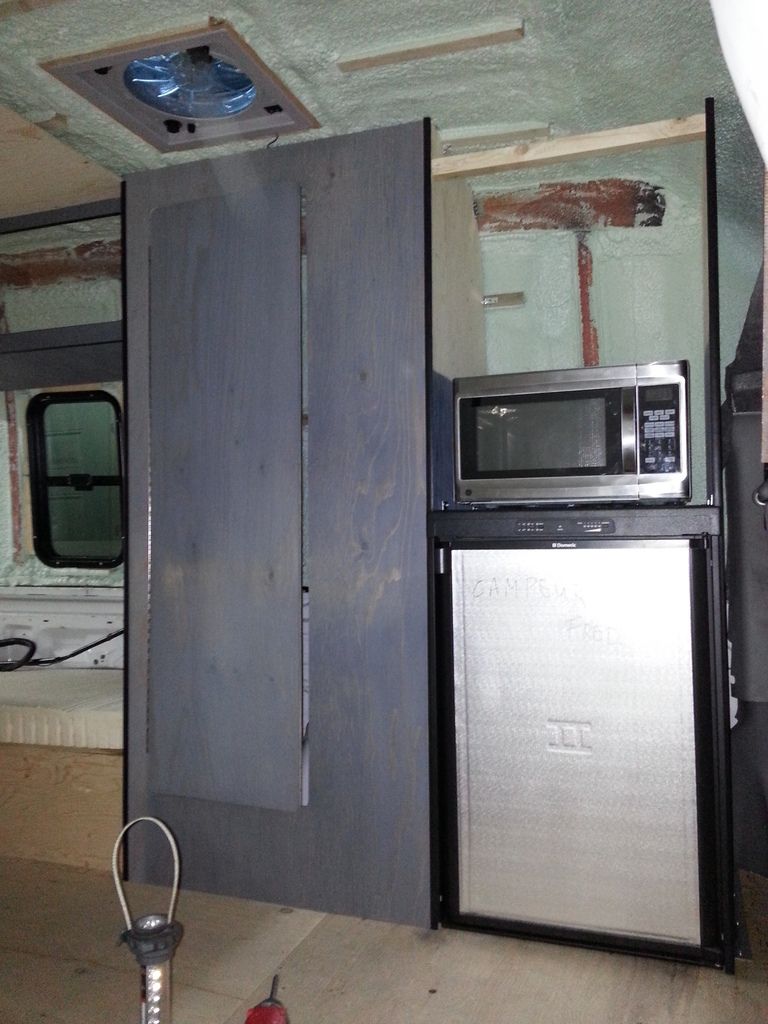
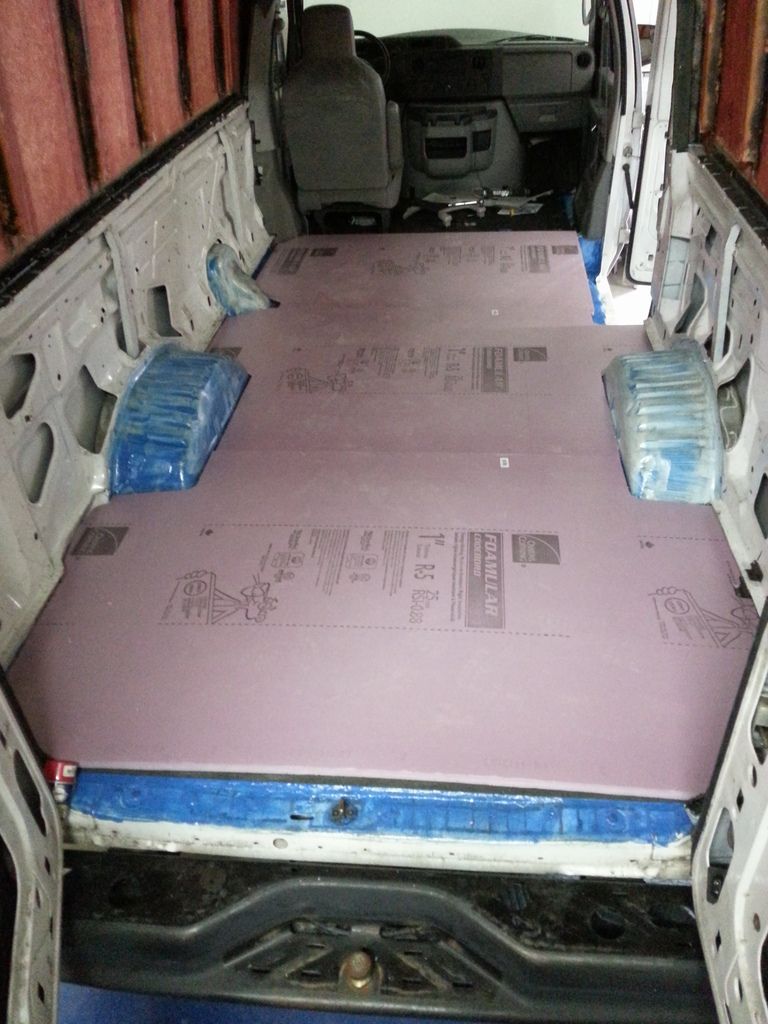
I'm an Architectural technician so I know a little bit about insulation but this is not a house, I don't believe in Reflectix (sorry I know a lot of you do) I don't even consider it to be insulation, it's basically a thermal bridge breaker, I'm not saying it doesn't work, I just don't want to use it.
Also I know there's a lot of people afraid of polyurethane foam, there's some talk of panel warping, I'm aware of that, from what I have learned there's 2 main reasons for that, the insulation company that did the upper walls and ceiling of my van told me that the temperature of the polyurethane coming out of the nozzle is something like well over 200 degrees and that's why the panels warp (from the heat).
The other reason is expansion, when the foam is trapped it won't stop expanding and will warp the panels.
I have red many many articles here and there on the net and I think that's what it comes down to.
So here's my theory, take a look at my drawing, it's a section of the outer wall and floor.
I plan on using a different and relatively new product : Sika post fix
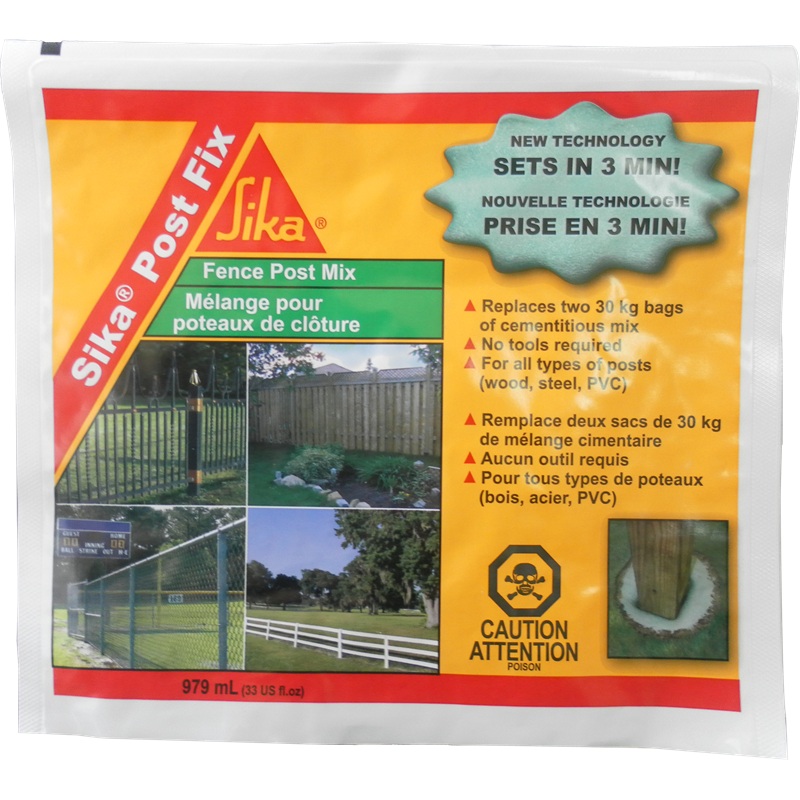
You can see it in action here :
https://www.youtube.com/watch?v=r9J2Rec2MjE
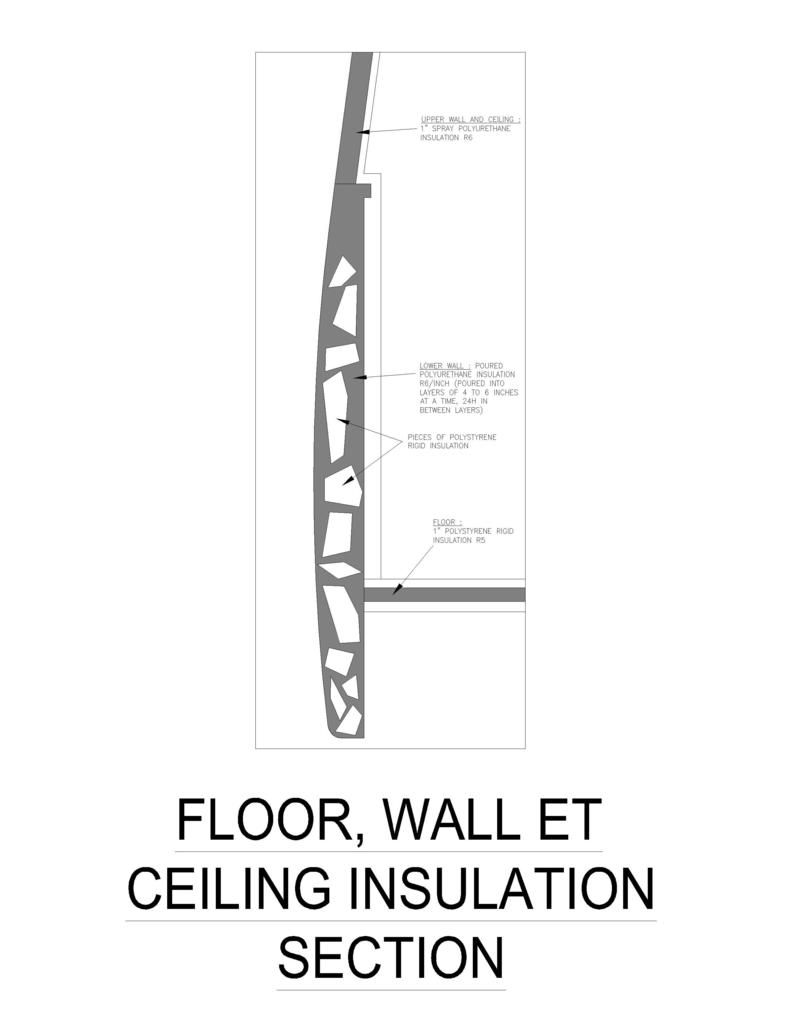
But the idea is to pour it in small layers of 4 to 6 inches (expanded) maximum at a time (that's my opinion) so the expansion would only be towards the top, So I would start pouring at one end making my way towards the other end, pouring it through the holes on the inside of the walls waiting 24h in between layers. Also I have a lot of scrap foam boards/pieces laying around, I would brake them up in small pieces and put them inside the panels, the expanding foam would fill the void in between the pieces, also I would need much less of that liquid post fix polyurethane.
So there's my theory... what do you think about it?
I'm actually waiting to do this because it's still pretty cold up here.
DIY conversion build, extended 2010 Ford 5.4L E250 + high top, from Montreal Canada, new to all this so please be patient and clear with me (never built or camped in a van yet)
- Mark as New
- Bookmark
- Subscribe
- Mute
- Subscribe to RSS Feed
- Permalink
- Report Inappropriate Content
Apr-24-2016 06:33 PM
jesseannie wrote:
I think your theory sounds good. I have filled/sprayed poly-urethane insulation a few times and my first question is why did the company that did the upper portions not want to do the lower?
The second concern is having loose material in the cavity I think will be a problem. Unless it is fixed in place I think it will float and move making it difficult to get the cavity full. The material that you will pour in is probably going to be pretty thick and it may not fill around the loose pieces as well as you think.
Remember to get an R-value of 6 you only need an inch of material. You don't need to fill some of those huge cavities.
What are you going to use as a finish on the lower walls? Can you build out a little and incorporate a rigid urethane board in the "furring" this might be an advantage when running electrical or plumbing not to have it encapsulated in permanent foam??
Good luck I love working out tough application problems like this.
jesseannie
They didn't want to do the bottom part for two reasons, the first one being that they stopped insulation van's if what they are spraying it on is metal, because of the high temperature vs the metal panels = warping like I mentioned earlier, so I told them to just do the ceiling and upper walls and they agreed. The other reason is that they didn't have access to the outer panel because of the inner panel, they have to be 16" away from what they are spraying, they can't just insert there nozzle in a whole and press the button, it just doesn't work that way.
The other question you had about the loose material, I'm not so sure anymore, initially I was thinking breaking the rigid insulation into small pieces maybe 2"x2" or smaller, and I filling the void until they're stuck there and they can't move. but if I do that I wont be able to pour it on the bottom... the mixed liquid is going to hit all those pieces and probably won't make it to the bottom, leaving some air space here and there...
Maybe I could insert some pieces manually from the top after pouring the liquid?
I will have to drill 2" holes with my hole-saw on the inner panels here and there, if you look at the inside of a Ford van those holes are random and in some areas there are none.
I don't know how to limit the pouring to 1" of insulation on the outer panel, the ways I see it, I have to fill the whole thing 😕
Do you have an idea?
I won't be running any wires or pipes in there anyways.
DIY conversion build, extended 2010 Ford 5.4L E250 + high top, from Montreal Canada, new to all this so please be patient and clear with me (never built or camped in a van yet)
- Mark as New
- Bookmark
- Subscribe
- Mute
- Subscribe to RSS Feed
- Permalink
- Report Inappropriate Content
Apr-24-2016 06:31 PM
Simple test might be to fill a glass jar half full. If it is busted 24 hours later then you know your theory will not work.
On edit:
Have you considered using blown in insulation. Simple and easy.
- Mark as New
- Bookmark
- Subscribe
- Mute
- Subscribe to RSS Feed
- Permalink
- Report Inappropriate Content
Apr-24-2016 06:09 PM
The second concern is having loose material in the cavity I think will be a problem. Unless it is fixed in place I think it will float and move making it difficult to get the cavity full. The material that you will pour in is probably going to be pretty thick and it may not fill around the loose pieces as well as you think.
Remember to get an R-value of 6 you only need an inch of material. You don't need to fill some of those huge cavities.
What are you going to use as a finish on the lower walls? Can you build out a little and incorporate a rigid urethane board in the "furring" this might be an advantage when running electrical or plumbing not to have it encapsulated in permanent foam??
Good luck I love working out tough application problems like this.
jesseannie
- Mark as New
- Bookmark
- Subscribe
- Mute
- Subscribe to RSS Feed
- Permalink
- Report Inappropriate Content
Apr-24-2016 06:03 PM
That post hole filler uses foam that is too dense for insulation. The electric/irrigation utility I retired from used foam to set poles, mostly streetlight poles. The foam they used was pretty nasty stuff and was definitely dense. It's also pretty high expansion.
- Mark as New
- Bookmark
- Subscribe
- Mute
- Subscribe to RSS Feed
- Permalink
- Report Inappropriate Content
Apr-24-2016 05:58 PM
bob_nestor wrote:
Spray foam, when installed by someone who knows what they're doing, doesn't cause damage thru expansion. It just needs to be sprayed a little at a time in layers.
I had open cell spray foam installed in the house I'm renovating. I wanted it in the ceiling, and to do that I laid construction paper over the tops of the joists and stapled it down. The insulation contractor sprayed into the that and there were very few places where the pressure from expansion displaced the paper, usually only in areas where I didn't put in enough stapes. Never saw one place where the paper was torn from expansion, but I did see a lot of small nooks and crannies that were nicely filled with the foam.
There are also different formulas for the spray foam and you can see that in the types available at home improvement stores. The formula recommended for use around doors and windows expands but only to the point where it meets an obstruction so it doesn't warp the frames.
The lower walls are made of the outside panel and the inner panel as you can see, the insulation has to be in between them, there are some holes but not that many, when you use spray foam you need to have clear access to shoot the stuff on what you're insulating, in my case I would have to remove the inner panel? what are you proposing?
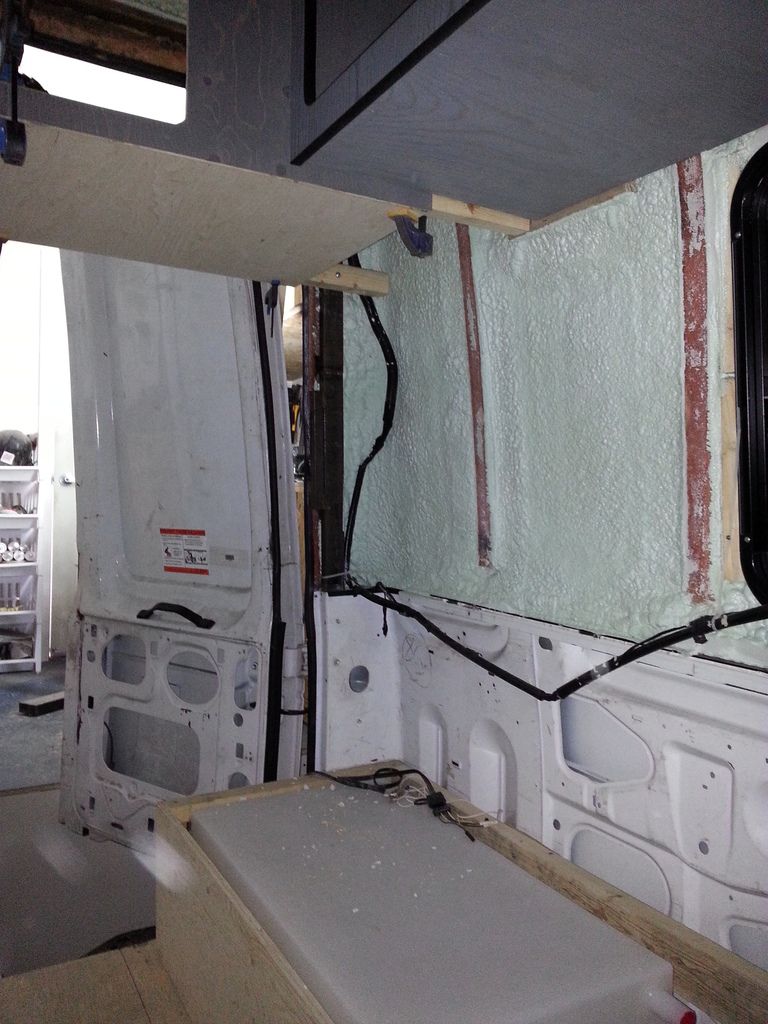
DIY conversion build, extended 2010 Ford 5.4L E250 + high top, from Montreal Canada, new to all this so please be patient and clear with me (never built or camped in a van yet)
- Mark as New
- Bookmark
- Subscribe
- Mute
- Subscribe to RSS Feed
- Permalink
- Report Inappropriate Content
Apr-24-2016 05:55 PM
Did you figure the cost? Would it be easier or cheaper (I know it's messier) to use several cans of Great Stuff?
Keep us updated on your progress and if the Sika works as expected.
- Mark as New
- Bookmark
- Subscribe
- Mute
- Subscribe to RSS Feed
- Permalink
- Report Inappropriate Content
Apr-24-2016 05:51 PM
DutchmenSport wrote:
I watched the video. I don't see where this product has any "insulation" value. In order for "insulation" to work, it needs air. Yes, air is the best insulation. A thermopane window has 2 layers of glass with nothing but air in-between. Fiberglass home insulation works because there is a space of air between the fibers. If you compress the fibers to where there is no air, fiberglass insulation for you home will pass heat and cold, like a sheet of aluminum. Blown insulation in your home looses it's effectiveness after several years because it begins to compact and the "fluffiness" (air) is gone.
Styrofoam works well because of the air in the foam. Your product is designed for holding "posts" in the ground. It's not recommended for posts for decking. I think your purpose for this product is completely wrong.
If you want insulation, get the product that's made for insulation. This product is not made for insulation value, from what I saw.
Polyurethane is polyurethane, it's the same thing.
The only difference is that it's poured instead of being sprayed, and that's not my opinion, look at this product from Homedepot, you have two parts that mix up together with a zigzag type nozzle, same thing.
The reason they don't mention the R value is because they use it for something other than insulation, I've seen companies use polyurethane to raise concrete slabs by injecting it underneath and using the expansion to raise the slab, they wont mention the R value either but it's still polyurethane.

DIY conversion build, extended 2010 Ford 5.4L E250 + high top, from Montreal Canada, new to all this so please be patient and clear with me (never built or camped in a van yet)
- Mark as New
- Bookmark
- Subscribe
- Mute
- Subscribe to RSS Feed
- Permalink
- Report Inappropriate Content
Apr-24-2016 05:37 PM
I had open cell spray foam installed in the house I'm renovating. I wanted it in the ceiling, and to do that I laid construction paper over the tops of the joists and stapled it down. The insulation contractor sprayed into the that and there were very few places where the pressure from expansion displaced the paper, usually only in areas where I didn't put in enough stapes. Never saw one place where the paper was torn from expansion, but I did see a lot of small nooks and crannies that were nicely filled with the foam.
There are also different formulas for the spray foam and you can see that in the types available at home improvement stores. The formula recommended for use around doors and windows expands but only to the point where it meets an obstruction so it doesn't warp the frames.
- Mark as New
- Bookmark
- Subscribe
- Mute
- Subscribe to RSS Feed
- Permalink
- Report Inappropriate Content
Apr-24-2016 05:37 PM
Styrofoam works well because of the air in the foam. Your product is designed for holding "posts" in the ground. It's not recommended for posts for decking. I think your purpose for this product is completely wrong.
If you want insulation, get the product that's made for insulation. This product is not made for insulation value, from what I saw.
- Mark as New
- Bookmark
- Subscribe
- Mute
- Subscribe to RSS Feed
- Permalink
- Report Inappropriate Content
Apr-24-2016 05:35 PM
agesilaus wrote:
You can buy poly foam in a large container, about like a small propane cylinder. And use that to fill your walls ect. It's designed as insulation which this other material doesn't seem to be. Or you can pay a contractor to do it.
Polyurethane is polyurethane, it's the same thing.
The only difference is that it's poured instead of being sprayed, and that's not my opinion, it's a fact.
anyways look at this picture, you can't just put the nozzle in some of the holes or shoot it at the bottom and hope it will fill the void.
I had the upper walls and ceiling done by an insulating company and they didn't want to do the bottom part.

DIY conversion build, extended 2010 Ford 5.4L E250 + high top, from Montreal Canada, new to all this so please be patient and clear with me (never built or camped in a van yet)
- Mark as New
- Bookmark
- Subscribe
- Mute
- Subscribe to RSS Feed
- Permalink
- Report Inappropriate Content
Apr-24-2016 05:14 PM
2018 RAM 2500 6.7L 4WD shortbed
Straightline dual cam hitch
400W Solar with Victron controller
Superbumper





